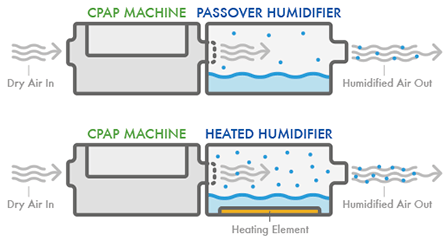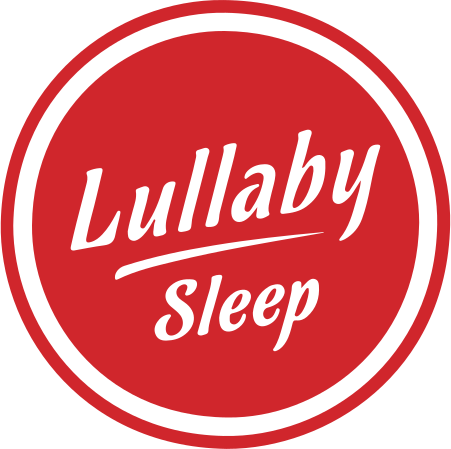Changing Seasons means changing CPAP humidification performance
The joyous summer sun has arrived in Australia, and with that comes changes in weather that can actually affect one’s comfort on their CPAP therapy. With the increase in temperature and the change of humidity in the air, some CPAP users may find excessive moisture in their masks or droplets of water in the tubing, of feeling the air is too warm.
This is due to the fact that hot air actually holds more water than cold air. Think QLD VS. TASSIE.
How to fix that “Rain Out” in your tubing
To combat this seasonal issue, changing your humidity setting or and/or heated tubing can help.
The warmer the humidifier air and the colder the tube, the more condensation is formed.
The higher the humidifier setting, the more moisture is added to the air.
Your Lullaby Sleep Therapists can help you through this setting change.
Heated tubing also helps this by controlling the temperature of the air throughout the tube all the way to the CPAP mask. CPAP Machines have this feature.
If you do not have this type of tubing, turning down your humidification during the colder weather will help eliminate moisture in the tube. If this continues to be an issue, try and place the CPAP machine on the floor (hard surface) so moisture will collect at the bottom of the tube rather than at the mask.
Placing your tubing under your blankets on those cold nights may also be beneficial as your body temperature and warmth can help keep the water droplets where they belong.
Not sure you have a heated tube? Want to optimize your CPAP therapy? Snore MD has the latest and most advanced CPAP tubing and therapy accessories to ensure your best sleep ever!
Golden Rule
During winter
- If too much condensation, then turn ensure your hose is insulated, or turn up the tube temperature and turn the humidifier water heating level down.
- If not enough, then turn up the humidifier heating level.
During Summer
- If too warm, then turn down the heating of the hose and humidifier level.
- If not enough moisture, turn up the humidifier level
- If condensation, then increase the tube temperature, or ensure you have a tube sock/warmer.
With the change in season, now is the time to check your CPAP filters as well. Stop into your friendly Lullaby Sleep Clinic to make sure your therapy is working it’s best!
Cold or Warm?
In addition to the type of humidifier configuration you have/need, there are choices regarding whether you want passover air or warm heated air.
Passover Humidifiers
Passover humidifiers use room temperature water to add moisture to the airflow to reduce the irritation in the nasal passages. The water temperature will drop as the air temperature drops. The nose will again need to work harder to warm the air before it gets to the lungs.
The dropped air temperature in cold climates will result in cold CPAP water temperature, causing the amount of moisture in the water to drop. Unless you like breathing cold air, heated humidification is a better option for PAP users.

Heated Humidifiers
A heated humidifier uses heat to warm the water to add moisture to the PAP air. The heat temperature can be adjusted for more or less moisture. The higher the heat, the more moisture you will receive. The temperature can also be adjusted for higher or lower temperatures, beginning at 80 degrees.
Heated humidifiers are the preferred type of humidification among PAP users. Heated humidification not only makes the pressurized air more comfortable to breathe, it can also reduce the amount of pressure needed for some patients.
Cleaning and Maintenance
CPAP humidifiers can be used year round, helping deal with dry air, supplying additional moisture when you have a cold, and dealing with unwanted dry mouth, nose bleeds, sinus infections, inflammation, etc.
It is a good idea to adjust your humidifier when seasons change to receive the most benefit from your humidifier. In most cases, your humidification levels should be highest in the winter, lowest in the summer, and in between during spring and fall.
CPAP manufacturers recommend using distilled water in your humidifier to prevent mineral deposits from forming. If distilled water is not available, use bottled water. Do not let water stand in your humidifier between uses. Some CPAP machines have a feature that preheats the water in the humidifier chamber.
It is recommended that you clean your humidifier and mask every day, with warm soapy water. Let them air dry. A very easy way to clean your tubing (follow manufacturer’s instructions for wired tubing) is to take it in the shower with you, run water through it and let it drip dry.
Once a month, place your hose, mask and humidifier water chamber in water and vinegar (3 parts water to 1 part vinegar), and let them soak for 20-30 minutes. Rinse thoroughly with clean warm water and let them air dry. It is important to keep equipment clean to avoid bacterial growth from forming. Remember that PAP equipment lives in a dark, warm environment where bacteria love to grow.

